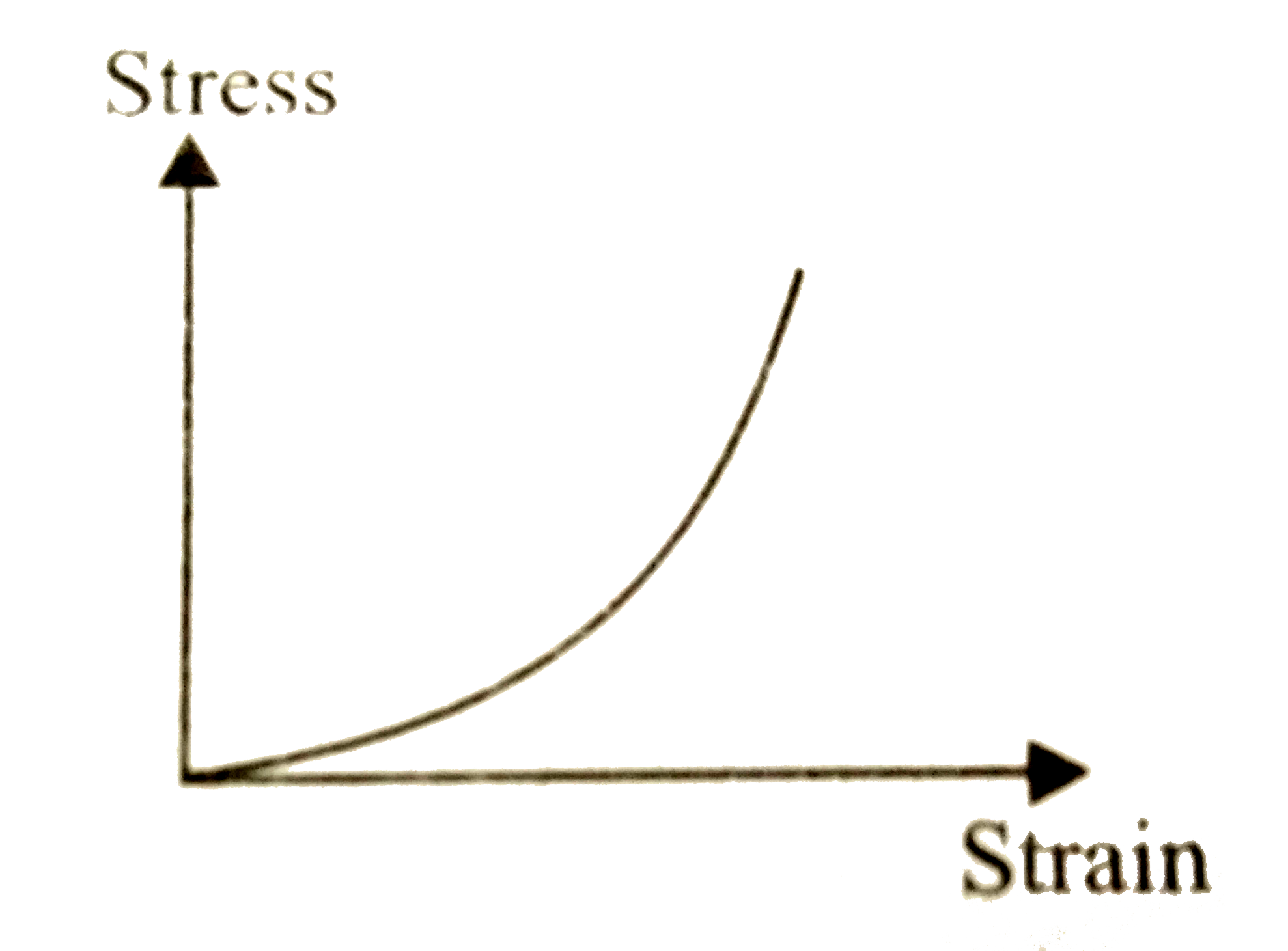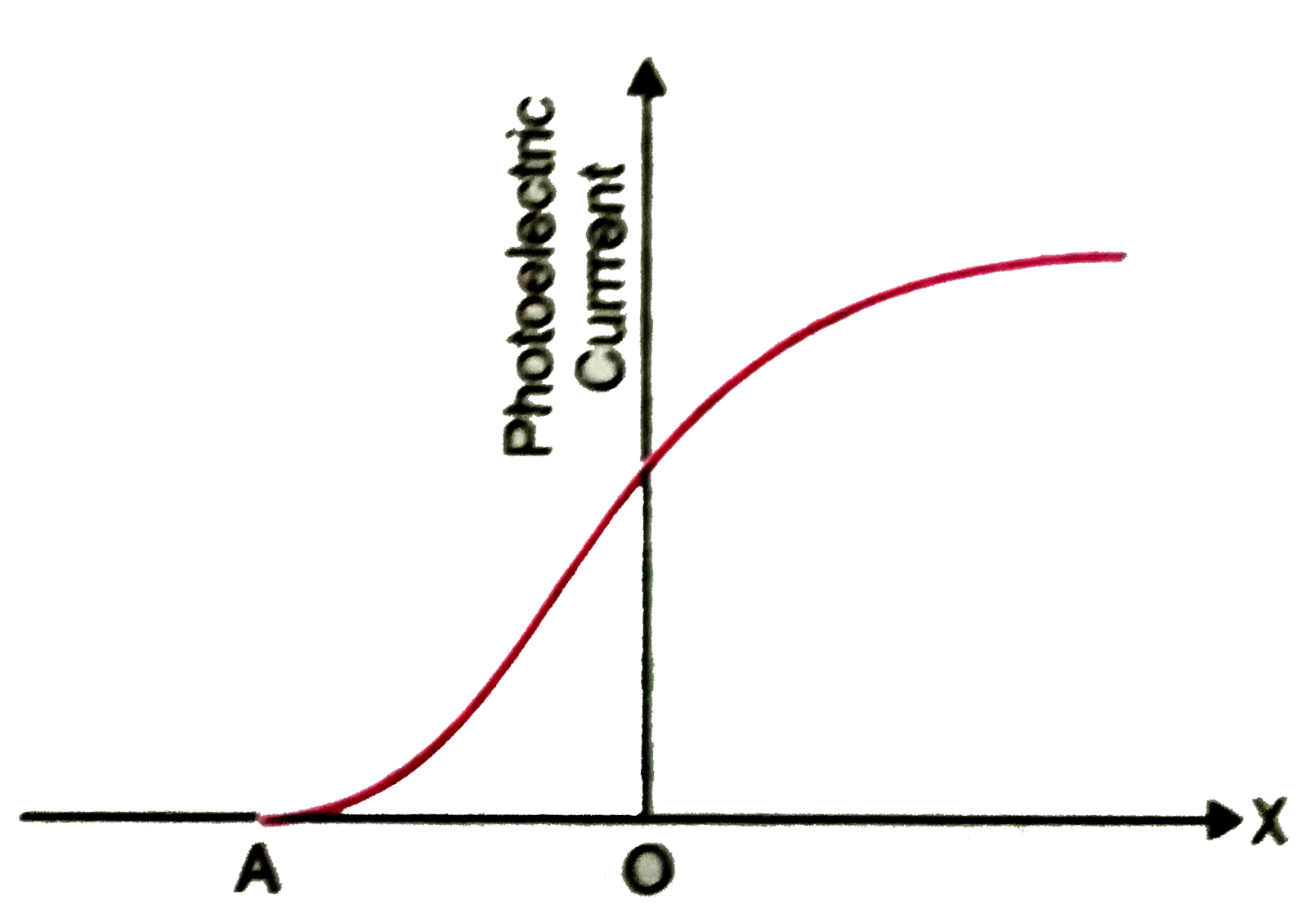Which one of the following graphs in figure shows the variation of photoelectric current (I) with voltage (V) between the electrodes in a photoelectric cell?




The correct Answer is:A
To determine the correct graph that shows the variation of photoelectric current I with voltage V between the electrodes in a photoelectric cell, we can analyze the behavior of the photoelectric effect under varying voltage conditions.
1. Understanding the Photoelectric Effect:
- When light of sufficient frequency strikes a photoelectric material, it ejects electrons. The ejected electrons contribute to the photoelectric current.
2. Current at Zero Voltage:
- When the voltage V is zero, there is no potential difference to drive the electrons towards the anode. Therefore, the photoelectric current I is also zero. This means that any graph where the current is non-zero when V=0 is incorrect.
3. Increasing Voltage:
- As the voltage V increases, the electric field accelerates the ejected electrons towards the anode, increasing the current I. Initially, the current increases with increasing voltage.
4. Saturation Current:
- After reaching a certain voltage, the current reaches a maximum value known as the saturation current. This occurs when all the emitted electrons are collected at the anode, and further increases in voltage do not increase the current.
5. Reverse Voltage:
- If the voltage is reversed (negative voltage), the current will decrease and eventually become zero as the electric field opposes the movement of the emitted electrons. However, there may still be a small reverse current due to the few electrons that can still reach the anode.
6. Analyzing the Options:
- Based on the above understanding:
- Option A: Starts at zero current when V=0 and increases to a saturation current, which is consistent with our analysis.
- Option B: Shows current decreasing to zero with increasing voltage, which is incorrect.
- Option C: Shows a large increase in current with a small increase in voltage, which is also incorrect.
- Option D: Shows non-zero current at zero voltage, which is incorrect.
7. Conclusion:
- The correct graph that represents the variation of photoelectric current I with voltage V is Option A.
- When light of sufficient frequency strikes a photoelectric material, it ejects electrons. The ejected electrons contribute to the photoelectric current.
- When the voltage V is zero, there is no potential difference to drive the electrons towards the anode. Therefore, the photoelectric current I is also zero. This means that any graph where the current is non-zero when V=0 is incorrect.
- As the voltage V increases, the electric field accelerates the ejected electrons towards the anode, increasing the current I. Initially, the current increases with increasing voltage.
- After reaching a certain voltage, the current reaches a maximum value known as the saturation current. This occurs when all the emitted electrons are collected at the anode, and further increases in voltage do not increase the current.
- If the voltage is reversed (negative voltage), the current will decrease and eventually become zero as the electric field opposes the movement of the emitted electrons. However, there may still be a small reverse current due to the few electrons that can still reach the anode.
- Based on the above understanding:
- Option A: Starts at zero current when V=0 and increases to a saturation current, which is consistent with our analysis.
- Option B: Shows current decreasing to zero with increasing voltage, which is incorrect.
- Option C: Shows a large increase in current with a small increase in voltage, which is also incorrect.
- Option D: Shows non-zero current at zero voltage, which is incorrect.
- The correct graph that represents the variation of photoelectric current I with voltage V is Option A.
Topper's Solved these Questions
- ATOMIC PHYSICSBook:RESONANCE ENGLISHChapter:ATOMIC PHYSICSExercise:Exercise (2) Only one option correct type
Explore 30 Videos
- ATOMIC PHYSICSBook:RESONANCE ENGLISHChapter:ATOMIC PHYSICSExercise:Exercise-2 part-II Single and double value integer type
Explore 12 Videos
- ATOMIC PHYSICSBook:RESONANCE ENGLISHChapter:ATOMIC PHYSICSExercise:Exercise 1 Part-1 subjective questions
Explore 35 Videos
- ALTERNATING CURRENTBook:RESONANCE ENGLISHChapter:ALTERNATING CURRENTExercise:HIGH LEVEL PROBLEMS
Explore 11 Videos
- CAPACITANCEBook:RESONANCE ENGLISHChapter:CAPACITANCEExercise:High Level Problems
Explore 16 Videos
Similar Questions
Knowledge Check
Which of the following is the graph showing stress-strain variation for elastomers ?
A B
B C
C D
D
Which of the following statements is correct regarding the photoelectric experiment ?
AThe photocurrent increases with intensity of light.BStopping potential increases with increase in intensity of incident light.CThe photocurrent increases with increase in frequency.DAll of these
Which of the following statement is(are) true in the context of photoelectric effect
View SolutionThe following graph shows the variation of photoelectric current for a photosensitive metal .

Identify the variable X on the horizontal line.
View SolutionA point source of light is used in an experiment on photoelectric effect . Which of the following curves best represents the variation of photo current (i) with distance (d) of the source from the emitter ?

View SolutionWhich one of the following is true in photoelectric emission
View SolutionWhich one of the following graphs shows the variation of magnetic induction B which distance r from a long wire carrying a current ?
View SolutionWhy caesium and potassium are used as electrodes in photoelectric cells ?
View Solution

